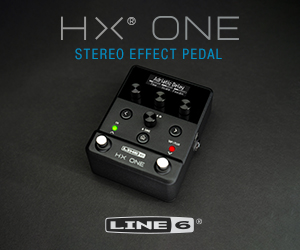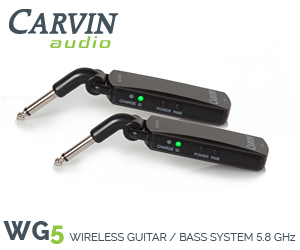More For Less: TheToneKing.com Checks Out the Cort CR250
Marc Johnson | Aug 25, 2011 | Comments 26
More For Less: TheToneKing.com Checks Out the Cort CR250
Marc Johnson for TheToneKing.com

The topic always comes up. Standing underneath a row of hanging Gibson, Fender, and PRS guitars, one of us is always bound to mumble, “Why do these things cost so damn much?” Loyal followers of TheToneKing.com will know that we are always wrestling with this question. There’s a myriad of reasons why a guitar costs what it does, but it’s not what you’d expect. It’s not always about quality. Well, Cort Guitars has something to say, and, with the introduction of their Classic Rock 250, they want to show the world that you don’t need to pay four figures to get a five-star guitar.
Cort has been in business for over 50 years, and all of us have seen their guitars and basses swinging in local shops. And, many of us have been put off by the fact that it doesn’t say Gibson or Fender on the headstock. But ask yourself: “Could you tell the difference in a blind taste test?” Before we get to The Tone King’s answer to that question, let’s start by taking a look at some specs.
The CR250 includes: a Set-in 24 ¾ scale neck; Mahogany body; Flame maple top; Three finish options; Mahogany “C” shape neck; Rosewood fretboard with 12” radius; Rectangular white pearl inlay; T.O.M. bridge with stop tailpiece; Vintage style tuners; Two volume, two tone and three way toggle controls; and Nickel-plated hardware. One of the features that Cort is most proud of, though, is the pickups. The ClassicRocker II Humbuckers were modeled after a classic PAF, built to have the same smooth cleans and ballsy crunch with a bit of “extra power” so your leads will cut through the mix. U.S. street price on this is less than $400 bucks.
When we pulled the CR250 out of the case, we noticed how vivid the flames were on the maple top. Usually, when a company boasts a “flame maple top,” you’re left with a piece of veneer so thin that it’s almost transparent. Although it’s impossible to tell how thick it is because of the binding, the cut of maple is thick enough to give off a deep flame.
 On further inspection, the heel (where the neck meets the body) was set-in to the body well. Usually, on less expensive guitars, the set of the heel can be off which makes itself known with cracks in the finish or a fretboard that doesn’t come in contact with the body. In this case, the fretboard was flush and seated flat against the top.
On further inspection, the heel (where the neck meets the body) was set-in to the body well. Usually, on less expensive guitars, the set of the heel can be off which makes itself known with cracks in the finish or a fretboard that doesn’t come in contact with the body. In this case, the fretboard was flush and seated flat against the top.
The frets were crowned and mounted to the neck well, and the tang of the frets looked like they were properly trimmed to accommodate the binding on the neck. No sharp fret end, which tells us that the wood was properly prepared. There’s nothing worse than buying a new axe with razors sticking out of the side of the neck.
Inlays are usually a problem with less expensive guitars. Most times, they look cheap and dull, screaming plastic. The CR250’s white pearl inlays has depth. It was also a nice touch to see the logo with the same inlay material, versus the decals you typically find on other similarly priced instruments. We also noticed that the insignia below the logo on the headstock had a nice touch of abalone in it.
So, how does it sound?
Strumming a few chords before plugging it in showed how well the guitar resonated, a sign of a good piece of mahogany. When we plugged it in, cleans were reminiscent of the warm, but not boomy, tone of a Les Paul Standard. Once we put a little gain to it, Zeppelin-like tones were easy to come by. Dirty and nasty, muddy on the neck pick-up and clear and bright on the bridge. When we went a little heavier, we dialed in to a bit of that heavy modern metal. Zack Wylde and Metallica tones were both accessible. Pushing it just a bit further, we can see what Cort had in mind when they say a bit of “extra power,” as it handles high-gain well enough to get solos to cut through the mix.
Simply put, the guitar sounds and feels great.
We at the TTK have played our fair share of Gibsons, and if we couldn’t see the logo on the headstock, we’re not sure we could tell the difference between the CR250 and a Les Paul Standard. Granted, some of you Gibson enthusiasts might be able to find a subtle tonal or feel difference, but is it a $3,000 difference? Hell, is it a $1,000 difference? Because if you stuck on that Gibson logo, that’s how much more you’ll be looking to pay.
Because it’s a guitar that costs so little that boasts so much, we looked at this thing with a freaking magnifying glass, and, still, we had no complaints. Cort’s CR250 looked great, it felt great, and it sounded great, showing you that you don’t have to take out a second mortgage to get good tone. We’ll always love our classics, but we’re not so beholden to them that we’re not going to try something different that may make our rent payment easier to meet. And the Cort Classic Rock 250 is changing the perception that ‘less cash means less guitar’ into the idea that ‘you can get more guitar for less cash.’ Besides, which would you rather do, save money for a guitar, or just play one? For more information, check out the CR250 on CortGuitars.com.
And, if you want to check out some top blues guitars, click here! Enjoy!
Tiny URL for this post:
About the Author: Marc published his first novel Becoming in 2010. It’s a kick-ass book with monsters and dreams and stuff, and you should buy it. Since then, he’s written thousands of articles for TheToneKing.com, many of which have been picked up for circulation by manufacturers and other news outlets.
His next book, Drugs and Pancakes, should be available early 2014 if his alcoholic editor can find time to work on it in-between destroying his liver and screaming about punctuation. He graduated from Roosevelt University with honors, which means that he’s not as dumb as he looks.
He’s been playing guitar for over 25 years, which is almost twice as long as most of his students have been alive.




















